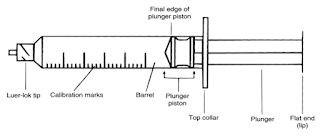Alfacalcidol and Calcitriol
Introduction
Vitamin D is a range of compounds which possess the property of preventing or curing rickets.
- They include ergocalciferol (calciferol, vitamin D2), colecalciferol (vitamin D3), dihydrotachysterol, alfacalcidol (1α-hydroxycholecalciferol), and calcitriol (1,25-dihydroxycholecalciferol).
NOTE: Only alfacalcidol and calcitriol is listed in Ministry of Health Medicines Formulary.
Cholecalciferol, Alfacalcidol and Calcitriol
Calcitriol is the active form of Vitamin D, which can be produced in the body from cholecalciferol or alfacalcidol.
- Alfacalcidol is rapidly hydroxylated in the liver to calcitriol.
- Whereas, cholecalciferol has to undergo metabolism in both liver and kidney to become calcitriol.
Hence, both alfacalcidol or calcitriol can be used for patients with severe renal impairment requiring vitamin D therapy.
- However, it is preferable to prescribe calcitriol for patients with severe liver and renal failure.
One-Alpha® 2 mcg/ml Drops In-use Stability
The in-use stability of alfacalcidol 2 mcg/ml oral drops has been updated in 2017.
- The previous 2011 product monograph recommended that the drops be keep refrigerated (2-8°C) and use within 28 days of first opening the bottle.
- The 2017 product monograph recommends that the drops to be used within 4 months of first opening the bottle.
Dosing Calcitriol for People with Enteral Feeding Tubes or Swallowing Difficulties
Australian Don't Rush to Crush Handbook suggests that the liquid content of the calcitriol capsule can be withdrawn using needles and syringes.
- You will need: an enteral syringe, two small syringes, one with a needle attached.
- Draw 5 ml of water into the enteral syringe.
- Remove the plunger from one of the small syringes and place the capsule inside the barrel of the syringe. Insert the plunger of the syringe so that it is pressed against the capsule.
- Use the syringe with the needle attached, to carefully pierce the capsule through the tip of the syringe that contains the capsule and withdraw the liquid.
- Add the liquid to the water in the enteral syringe.
- Safely discard all syringes and needles.
- Shake the enteral syringe well and give into the feeding tube. Flush the tube well.
- Some of the dose will be lost due to the technique and possible adsorption to the plastic.



Comments
Post a Comment